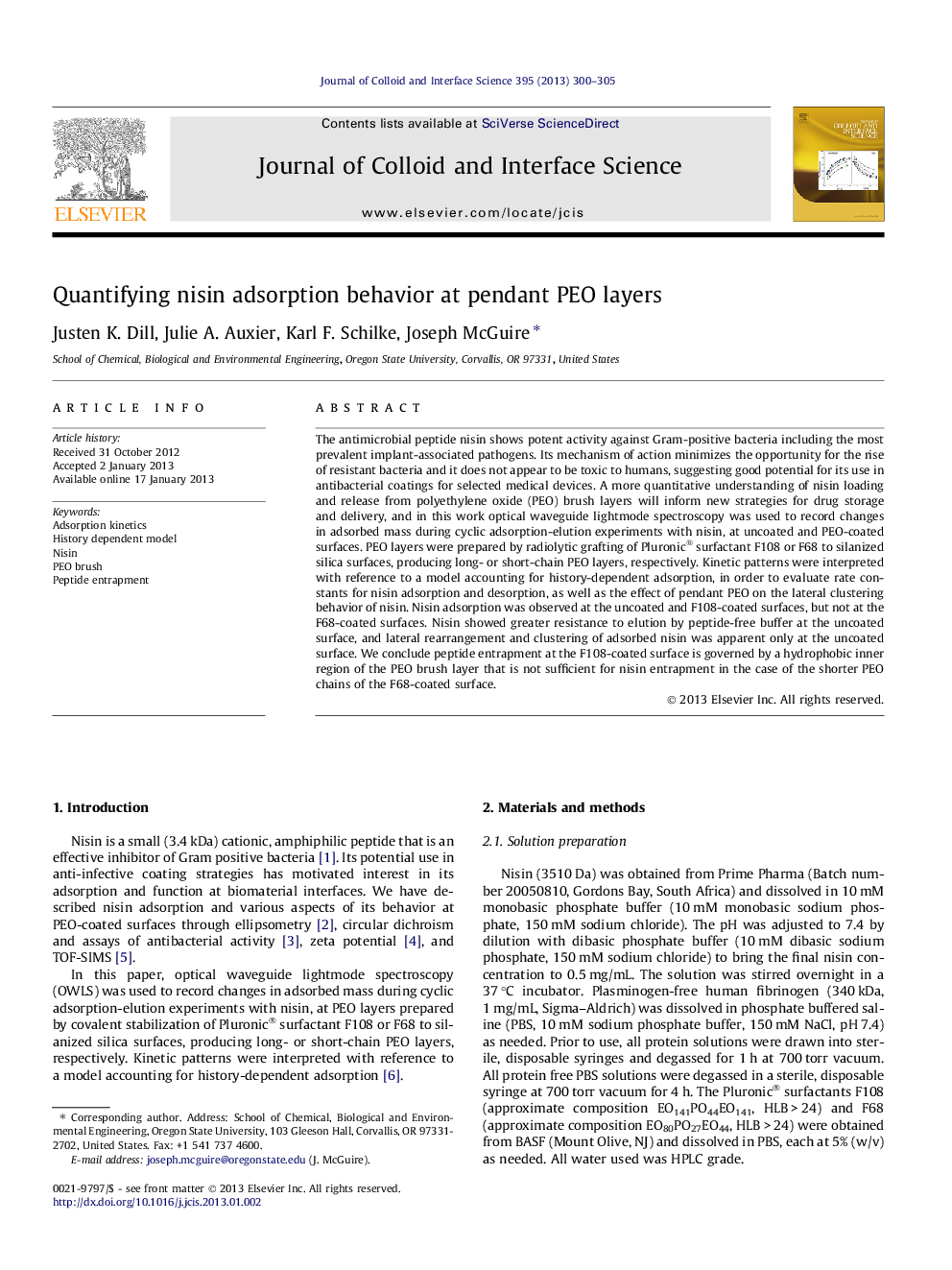| کد مقاله | کد نشریه | سال انتشار | مقاله انگلیسی | نسخه تمام متن |
|---|---|---|---|---|
| 608078 | 1454600 | 2013 | 6 صفحه PDF | دانلود رایگان |

The antimicrobial peptide nisin shows potent activity against Gram-positive bacteria including the most prevalent implant-associated pathogens. Its mechanism of action minimizes the opportunity for the rise of resistant bacteria and it does not appear to be toxic to humans, suggesting good potential for its use in antibacterial coatings for selected medical devices. A more quantitative understanding of nisin loading and release from polyethylene oxide (PEO) brush layers will inform new strategies for drug storage and delivery, and in this work optical waveguide lightmode spectroscopy was used to record changes in adsorbed mass during cyclic adsorption-elution experiments with nisin, at uncoated and PEO-coated surfaces. PEO layers were prepared by radiolytic grafting of Pluronic® surfactant F108 or F68 to silanized silica surfaces, producing long- or short-chain PEO layers, respectively. Kinetic patterns were interpreted with reference to a model accounting for history-dependent adsorption, in order to evaluate rate constants for nisin adsorption and desorption, as well as the effect of pendant PEO on the lateral clustering behavior of nisin. Nisin adsorption was observed at the uncoated and F108-coated surfaces, but not at the F68-coated surfaces. Nisin showed greater resistance to elution by peptide-free buffer at the uncoated surface, and lateral rearrangement and clustering of adsorbed nisin was apparent only at the uncoated surface. We conclude peptide entrapment at the F108-coated surface is governed by a hydrophobic inner region of the PEO brush layer that is not sufficient for nisin entrapment in the case of the shorter PEO chains of the F68-coated surface.
Figure optionsDownload high-quality image (32 K)Download as PowerPoint slideHighlights
► Nisin entrapment occurs within the inner, hydrophobic phase of pendant PEO.
► Nisin entrapment in PEO does not involve association with the underlying surface.
► Sufficient hydrophobic association with PEO is required for stable entrapment.
► Peptide entrapment in PEO layers offers an attractive platform for drug delivery.
Journal: Journal of Colloid and Interface Science - Volume 395, 1 April 2013, Pages 300–305